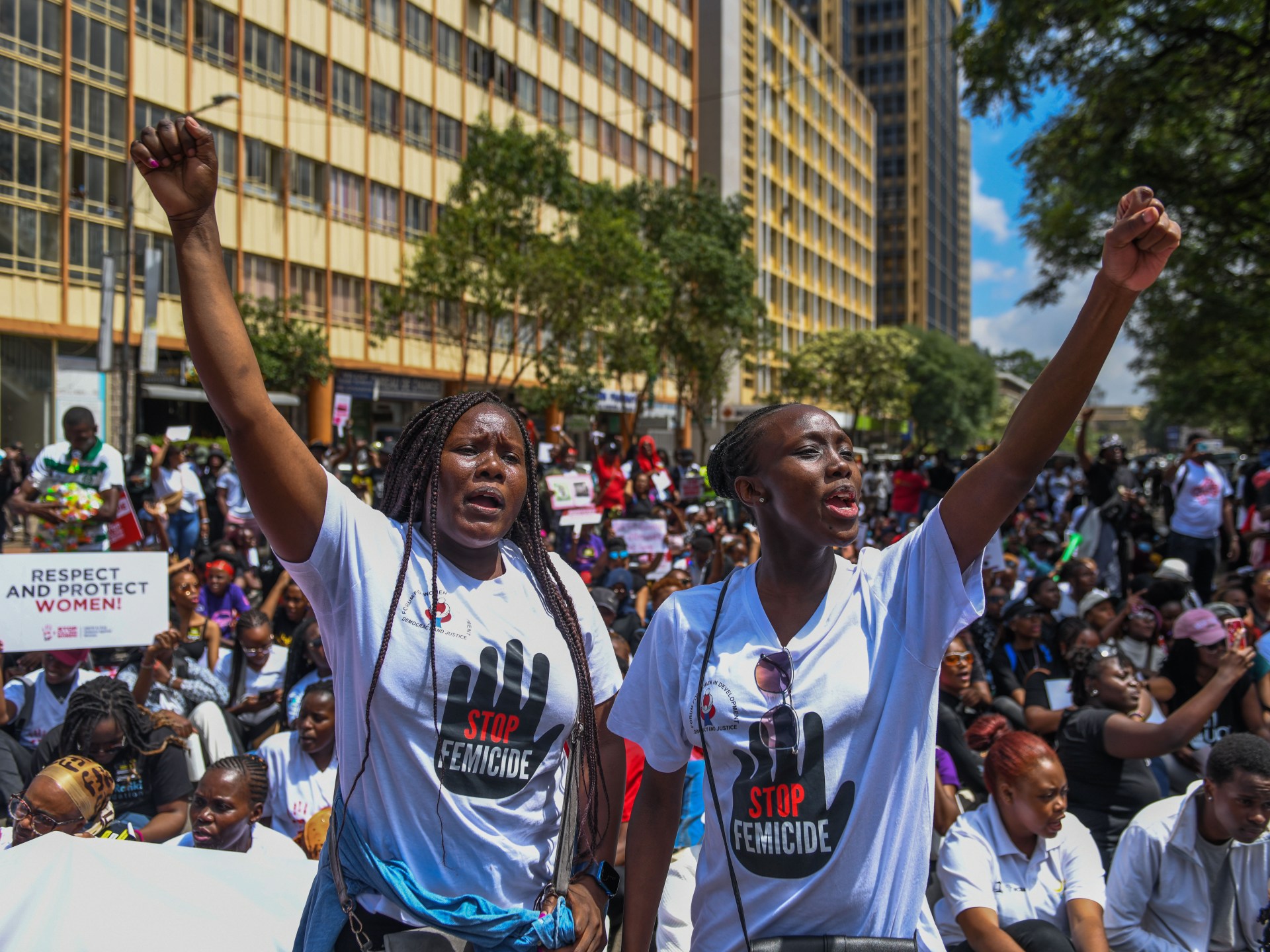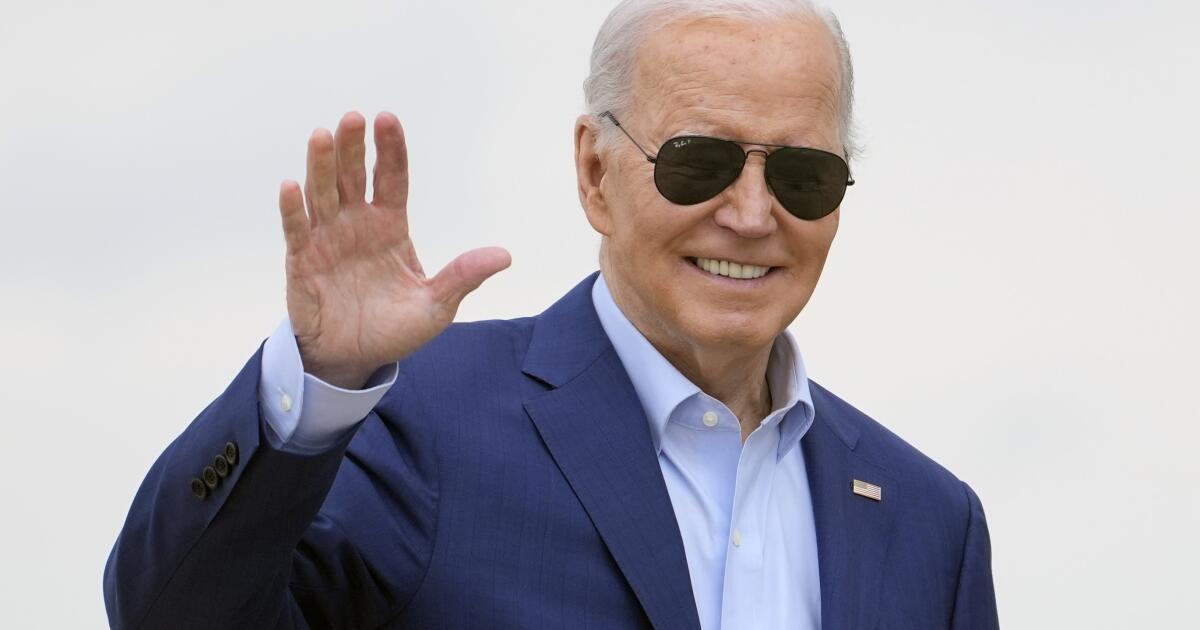Washington – The position of the Democratic Party in public opinion surveys has sunk with its lowest point in more than 30 years. Many of the party's own voters think that their leaders do not fight enough against President Trump. In a survey, the words they used most frequently were “weak” and “warm.”
“The party is in ruins,” said James Carville, the political strategist that helped Bill Clinton win the White House after a similar episode of disorder makes a generation.
And yet, in recent weeks, the besieged party has begun to exhibit signs of life.
His brand is still unpopular, but his chances of winning the Congress elections next year seem to be growing; In recent surveys, the participation of voters who say they plan to vote Democrat has reached an advantage of approximately 5% over the Republican Party. The possible presidential candidates, led by the governor of California, Gavin Newsom and the governor of Illinois, JB Pritzker, compete noisily for the most fierce Trump fighter title. And they have an ace in the hole: as not loved as the Democratic Party, Trump is also increasingly unpopular, with an approval index that falls to 40% or less in some surveys.
“There is no requirement that people love the Democratic Party to vote for it,” said Patrick Ruffini, Republican Survey Patrick Ruffini. “In an era of negative partisanship, people are motivated to vote more for disgust by the other part than for love on their own.”
Then, Carville, despite his “noise” diagnosis, believes that things are looking in the long run.
“The gift of the Democratic Party looks pretty bad, but I think his future looks pretty good,” he said. “I think we're going to be fine.”
He cited several straws in the wind: the new energy of the Democrats while campaigning against Trump; The encouraging survey numbers in the Congress elections next year; and an impressive promising leaders bank.
“The level of talent in the current Democratic Party is the highest I have seen,” he said. “Who leaves that competition will be a pretty strong candidate.”
But that nomination is three years away, and meanwhile, the Democrats face discouraging obstacles. On the one hand, Trump has pressed Texas and other states led by Republicans to re -draw Congress maps to consolidate the control of the Republican Party of the House of Representatives, an effort that could be successful despite the attempt of Newsom to counteract him in California.
Governor Gavin Newsom is pressing a measure to re -draw the map of the California Congress to help Democrats.
(Rich Pedroncelli / Associated Press)
Democrats, compared, remain without leaders and divided, discussing the lessons of their 2024 defeat and discussing how to recover their lost support between the working class and minority voters.
In a historical sense, the party is going through a family test: the struggle that a party normally faces after losing an election.
Therefore, Carville and other strategists have outlined variations of what a three -step recovery plan could call: first, Washington salt and gather the public opposition to Trump. Secondly, concentrate your message on “kitchen table problems”, mainly voters' concerns about increasing prices and a seemingly slow economy. Third, organize to win the elections of the Chamber and the Senate next year.
“We have to do well in 2026 to show that we are not so toxic that people will no longer vote for us,” said Doug Sosnik, another Clinton assistant.
They are arguing about the lessons of defeat and discussing how to recover the lost support between the working class and the minority voters.
When fighting Trump, they say they have found a starting point.
“We have found our balance. We have gone to the offensive,” argued representative Rue Khanna (D-Fremont), who spent most of the summer campaigning throughout the country. “Trump's cuts to Medicaid and tax exemptions for billionaires have given us a message that we can join.”
They still have many differences about specific policies, but an energetic debate, they say, is exactly what the party needs.
“The most important task of the Democratic Party is to organize … the strongest debate that the Democrats have had in a generation,” said William A. Galston, from Brookings Institution, a former Clinton assistant who argues that the party needs to move to the center.
This is what most of the Democratic leaders agree: they have heard the demands of their voters of a more vigorous struggle against Trump. They agree that they need to connect with the voters of the working class who do not believe that the party really worries about them. They need to present themselves as a change party, not as the status quo. And they must begin by recovering the control of the House of Representatives next year.

The representative Rost Khanna (D-Fremont) says that the Democrats “found our balance.”
(Sue Ogrocki / Associated Press)
Most Democrats also agree that they must focus on a positive message on economic issues such as the cost of living, using this year's fashion word, “affordability.”
But they differ in the details.
Progressive such as Senator Bernie Sanders (I-VT.) And the representative Alexandria Ocasio-Cortez (DN.Y.) have focused on “fighting the oligarchy”, including the highest taxes in the rich health insurance and administered by the Government.
Khanna, a progressive Silicon Valley, is campaigning for a program that calls “economic patriotism”, essentially, industrial policies to stimulate investments in strategic sectors.
Senator Ruben Gallego de Arizona, a blunt voice populist, wants capitalism to do more for common workers. “Every Latin man wants a big truck,” he said in an interview with The New York Times. “We are afraid to say, as, 'hey, we help ourselves to get a job so you can enrich yourself.”
And from the centrist of the party, the former chief of the Cabinet of Obama, Rahm Emanuel, describes his program as “build, baby, build”, arguing that Democrats should focus on making housing that housing is affordable and expanding technical and vocational education.
A more clear debate on social and cultural issues has been opened: Should the Democrats break the identity policy, the things that Republicans make fun as “awakened”, which encourages much of their progressive wing? Moderate Democrats argue that “wokeness” has moved voters in the center and has made it impossible to win presidential elections.
“I think there is a perception that the Democrats focused so much on the identity that we no longer had a message that could really talk to people in all areas,” said transport secretary Pete Buttigieg to NPR last month.
The controversy over transgender women and girls in women's sport has become an early test. Newsom, Buttigieg and Emanuel have broken with the left, arguing that there is a case to prohibit the transgender women of the competition. “It's an equity problem,” said Newsom in his podcast in March.
His statements caused a fierce reaction of defenders of LGBTQ+rights. “Now I'm going to enter a witness protection plan,” Emanuel joked in an interview with the conservative Podcast Megyn Kelly in July.
Other Democrats have stepped on more caution. “We need to make a convincing economic vision … Our first, second and third priority,” Khanna said. Meanwhile, it is said: “We can stay faithful to our values.”
The president of the National Democratic Committee, Ken Martin, was Blunter. “We have to defend each LGBTQ child and their family who want to practice sports like any other child,” he said last week.
These battles will be developed during the long campaign, already in their first agitations, for the next presidential nomination, the traditional form of American political parties is established in a single message.
“Time is needed for a party to lift the mat,” said Susnik, the former Clinton strategist. “We do not arrive here from night to morning. We are not going to leave overnight.”












